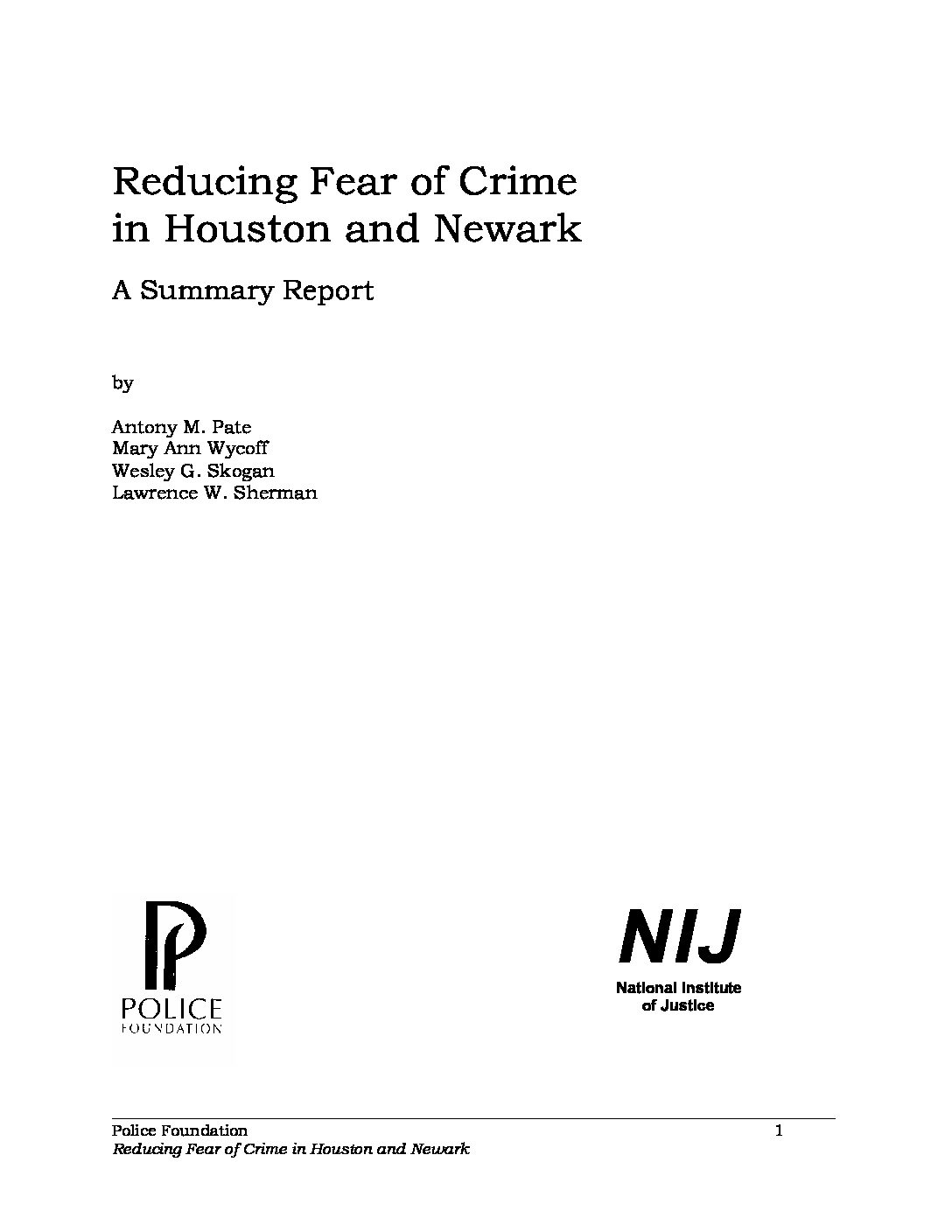Publication Date
January 1986
Author(s)
Antony M. Pate, Mary Ann Wycoff, Wesley G. Skogan, and Lawrence W. Sherman
Abstract
n 1982, NIJ funded empirical research to determine how the police can effectively address the problems of fear, disorder, the quality of police service, neighborhood satisfaction, and, ultimately, crime itself. This report provides an overview of the implementation and evaluation of the several programs tested by that NIJ-funded research. Houston and Newark were selected as examples of two different types of American cities—similar, however, in that their police departments were able to design and manage complex experimental programs. Houston is a new, growing city with low population density and a developing municipal infrastructure. Newark is a mature city with high population density and declining resources. Task forces were assembled in each city to determine which programs would best address local needs. Although both cities and some programs were different, most programs addressed the same underlying problems. The research summarized here demonstrates that there are strategies, several of them new, some of them used in the past but discarded, that can reduce levels of perceived crime and disorder, reduce fear and concern about crime, improve evaluations of police service, increase satisfaction with neighborhoods, and, in some cases, reduce crime itself. The most successful programs (neighborhood police centers, door-to-door contacts, community organizing by police, and the coordination of several such approaches) had two characteristics in common: they provided time for police to have frequent discussions with citizens who were encouraged to express their concerns about their neighborhoods; they relied upon the initiative and innovativeness of individual officers to develop and implement programs responsive to the concerns of the public. All of the successful programs increased the quantity and improved the quality of contacts between citizens and police. By staying in close contact with the neighborhoods they serve, the police were able to identify and, working with the residents, respond to problems at the local level.
Research Design
Quasi-experiment
Research Methods
Longitudinal study, Secondary data analysis, Interviews, Surveys, Field-based experiment
Recommended Citation
Strategic Priority Area(s)
Topic Area(s)
Contact
For general inquiries, please contact us at info@policinginstitute.org
Share
Strategic Priority Area(s)
Topic Area(s)
Contact
For general inquiries, please contact us at info@policefoundation.org
Share


